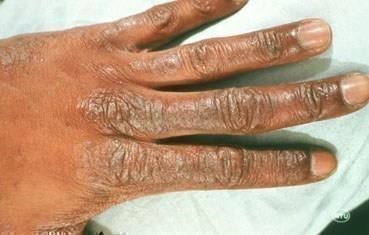
Dry skin*
Dry skin is a common issue for children, especially in colder months or dry climates. It often leads to itchiness, rough patches, and discomfort. For parents, understanding how to prevent and treat dry skin can help keep your child comfortable and reduce the risk of further skin irritation.
1. Causes of Dry Skin in Children
• Environmental Factors: Cold weather, low humidity, and exposure to wind or dry indoor heating can strip moisture from the skin.
• Frequent Bathing: Long, hot baths or showers and harsh soaps can remove the natural oils that protect the skin.
• Genetics: Some children are more prone to dry skin due to family history or conditions like eczema.
• Irritants: Exposure to chemicals in soaps, detergents, and certain fabrics can worsen dry skin.
• Dehydration: Not drinking enough water can contribute to dryness, as skin moisture depends partly on hydration.
2. Symptoms of Dry Skin
• Itchy Skin: Itchiness is one of the most common symptoms, which may worsen as the skin gets drier.
• Rough or Scaly Texture: Dry skin can feel rough to the touch and may have visible flaky patches.
• Red or Cracked Skin: In severe cases, dry skin can lead to small cracks, redness, and irritation.
3. Prevention Tips
• Limit Bath Time and Use Lukewarm Water: Shorten baths to 5-10 minutes and use lukewarm water instead of hot to preserve natural oils.
• Choose Gentle, Fragrance-Free Products: Opt for soaps, shampoos, and detergents that are mild and free from added fragrances or dyes.
• Moisturize Immediately After Bathing: Applying a fragrance-free, hypoallergenic moisturizer right after a bath can help lock in moisture.
• Dress for the Weather: In winter, dress your child in layers and cover exposed skin when going outside.
• Use a Humidifier: Adding moisture to indoor air can help, especially in winter months when heating systems dry out the air.
4. Moisturizing Tips
• Choose the Right Moisturizer: Look for thicker creams or ointments, as lotions are often less effective for dry skin.
• Apply Twice a Day: For best results, apply moisturizer in the morning and evening. Be extra generous after baths.
• Consider Petroleum Jelly: For particularly rough or cracked areas, petroleum jelly creates a protective barrier, sealing in moisture.
5. Home Remedies and Natural Options
• Oatmeal Baths: Adding colloidal oatmeal to bathwater can soothe itchy, dry skin.
• Coconut Oil: Natural oils like coconut oil can be effective moisturizers; however, check with your pediatrician, especially if your child has allergies.
• Avoid Scratching: Encourage your child to avoid scratching, as it can worsen dryness and lead to skin damage.
6. When to See a Doctor
• Persistent Dry Patches: If your child’s dry skin doesn’t improve with at-home treatments, consult a pediatrician or dermatologist.
• Signs of Infection: If the skin is red, swollen, or oozing, it may be infected and require medical attention.
• Symptoms of Eczema: If the dryness is severe and accompanied by thickened or inflamed skin, your child might have eczema, which requires a specific treatment approach.
7. Supporting Your Child Emotionally
• Teach Good Skin Care Habits: Encourage regular moisturizing and gentle skin care routines to empower your child.
• Provide Comfort: Reassure your child that dry skin is common and treatable, and that it doesn’t affect their beauty or self-worth.
Managing dry skin in children involves a mix of preventive care, regular moisturizing, and knowing when to seek help. With consistent care, most cases of dry skin can be relieved, keeping your child’s skin soft, comfortable, and healthy.
Leave a comment
Comments will be approved before showing up.



